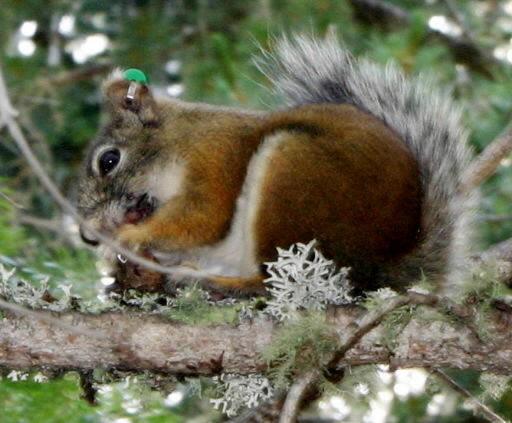A forest restoration project in the Pinaleño Mountains near Safford — aimed at improving habitat for the endangered Mount Graham red squirrel and reducing the risk of wildfires — begins today.
Work, which will continue through February, will include thinning dense forests, removing dead trees and eliminating excessive woody debris on the ground, said Heidi Schewel, spokeswoman for the U.S. Forest Service.
An area of about 360 acres, from Moonshine Creek to Grant Hill Trailhead in the Pinaleños, will be involved. Cunningham Campground will be closed to public use. The Pinaleños ate about 75 miles northeast of Tucson.
The work is part of the larger Pinaleño Ecosystem Restoration Project, an effort that will extend for 10 to 15 years and entail thinning some 2,700 acres and fuel treatments on 850 acres, Schewel said. Those treatments include piling, burning and scattering forest materials that could fuel wildfires.
Under a stewardship partnership agreement, the National Wild Turkey Federation will contribute 20 percent of the funding for the project with the remainder coming from the Coronado National Forest and grants, Schewel said. She couldn’t immediately provide a cost estimate for the work.
BENEFITS FOR SQUIRRELS
A fall 2013 census found 272 Mount Graham red squirrels in the Pinaleños, an increase of 59 animals from the previous year. Habitat improvements could help keep the population healthy.
“Two factors negatively affecting squirrel habitat are insect outbreaks and wildfire potential, both of which degrade habitat,” Schewel said. “Removal of excess fuel, alive and dead, will reduce the potential for stand-replacing wildfire. Reduced competition among trees will also promote improved forest health, reducing susceptibility to insects and disease and increasing tree growth and vigor.”
Such measures could result in habitat where squirrels are more likely to thrive.
REDUCING FIRE RISK
Thinning some species of trees and reducing the overall density of tree stands during the upcoming work could cut the risk of wildfires.
“We will reduce tree species that attract bark beetles, resulting in less tree mortality and available fuel” in the form of dead trees, Schewel said. She added that “lower density stands are more likely to experience less mortality and exhibit greater resiliency — ability to bounce back — following wildfires or bark beetle attacks than higher density stands.”
The removal of some trees will be aimed at promoting “sustainable forest conditions,” Schewel said.
“What we would like to see are conditions which are ‘clumpy’ in nature — with areas of higher tree densities mixed with strategic, smaller openings,” she said. “We will favor Douglas fir and ponderosa pine as the dominant tree species while maintaining components of less fire-adapted trees such as Engelmann spruce, corkbark fir and white fir.”
EFFECTS ON TRAFFIC
Traffic warning signs will be posted beginning at the junction of U.S. 191 and Arizona 366, which leads into the Pinaleños. Daily closures should be expected.
Travelers are advised to use caution as truck traffic on Arizona 366 will increase while work is in progress.





